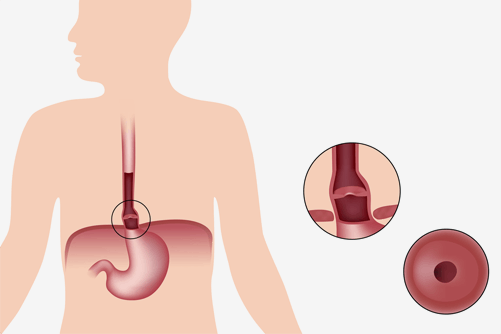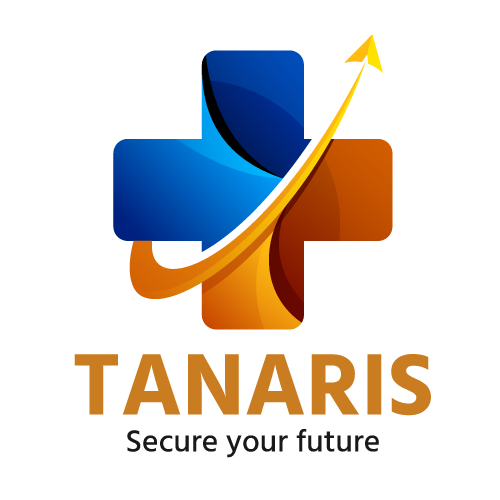Our Service
Home > Services
Services
Hiatal Hernia


A hernia is a protrusion of part of an organ through the muscle wall that surrounds it. A hiatal hernia occurs when the upper part of the stomach pushes up into the chest through a small opening (called the hiatus) in the diaphragm, the muscle that separates the abdomen from the chest.
Most of the time, a hiatal hernia is small enough not to cause any symptoms and you may never know you have one. However, if your hiatal hernia is large enough, the opening in the diaphragm increases, allowing more of your stomach and sometimes other organs to slide into your chest. Sometimes, the hernia squeezes your stomach, causing restriction and discomfort. The stomach may rotate and twist as well. This results in the retention of acid, which can easily back up into your esophagus, causing gastroesophageal reflux disease (GERD), heartburn, chest pain, swallowing problems, and breathing problems.
Types of Hiatal Hernias
Hernias are referred to by various names including hiatal hernia, paraesophageal hernia, and the rarest, diaphragmatic hernia.
Hernias are also categorized by their size and configuration. The vast majority are called Type I, or sliding Hiatal hernias. In this type of hernia, the stomach intermittently slides up into the chest through a small opening in the diaphragm.
Types II, III, and IV hernias are called paraesophageal hernias, which happen when a portion of the stomach pushes up into the chest adjacent to the esophagus. These hernias are much less common, but more concerning because the blood supply to the stomach can be threatened and symptoms tend to be more severe.
Risk Factors for Hiatal Hernias
The cause of hernias is unknown. Men and women of all ages can develop a hernia, but possible triggers include the following:
- Older than 50,
- Pregnancy,
- Obesity,
Persistent pressure on the muscles of the hiatus caused by:
- Coughing
- Vomiting
- Straining while having a bowel movement
- Sudden physical exertion
- Lifting heavy objects
Symptoms of Hiatal Hernias
Most of the time, a hernia does not cause symptoms but when it does they include:
- Heartburn,
- Belching,
- Nausea,
- Vomiting,
- Regurgitation or backflow of stomach contents into the esophagus.
More severe symptoms are usually associated with a paraesophageal hernia. Those signs and symptoms include:
- Intermittent difficulty swallowing, especially solid foods,
- Feeling full after eating only a small amount of food,
- Abdominal or chest pain,
- Difficulty breathing after meals or increased shortness of breath.
- Voice changes
Abdominal bleeding, the signs of which can be:
- Bright red blood in vomit
- Dark red or black stools
- Anemia
- Blood test showing there is blood loss
Patients with paraesophageal hernias may have a significant portion of their stomach or other abdominal organs push up into their chest. In severe cases, the stomach or abdominal organs may rotate or twist, causing severe pain. This is a medical emergency and will likely require immediate surgery.
Diagnosis of Hiatal Hernias
After a careful medical exam and taking your medical history, your board-certified thoracic surgeon may order one or more of the following tests to determine the cause of your symptoms:
- Chest X-ray, electromagnetic energy produces images of internal tissues, bones and organs.
- Chest CT-scan, a series of detailed pictures inside of the body, taken from different angles by a computer linked to an X-ray machine. A dye may be injected into a vein or swallowed to help the organs or tissues show up more clearly.
- Upper Endoscopy (EGD), an endoscope is inserted through the mouth and into the esophagus allowing the surgeon to see the lining of the esophagus and remove a tissue sample (a biopsy), which is examined in a laboratory.
- Barium Swallow/Upper GI study involves X-ray pictures of the esophagus and stomach after you have swallowed a small amount of contrast material. If a patient complains of trouble swallowing, a barium swallow may be helpful in identifying areas of narrowing called strictures.
Treatment for Hiatal Hernias
Hernias can often be monitored regularly. However, treatment may be necessary if the hernia is:
- In danger of becoming strangulated (twisted in a way that cuts off blood supply to the stomach,
- Complicated by severe gastroesophageal reflux disease (GERD),
- Complicated by esophagitis (inflammation of the esophagus),
- Causing chronic anemia or a need for blood transfusions,
- Causing recurrent pneumonia or infection,
- Causing pain or inability to vomit.
Treatments may include:
- Medication to neutralize stomach acid, decrease stomach acid, or improve stomach motility.
What You Should Expect ?
- Multidisciplinary Care
- Minimally Invasive Surgery
Laparoscopic surgery to reduce the size of the hernia or to prevent strangulation by closing the opening in the diaphragm. We perform laparoscopic operations by inserting a small video camera into the abdomen and viewing the procedure on a monitor, giving them better visualization and access. A fundoplication is performed in addition to reducing the hernia to help decrease acid and fluid from coming up from the stomach after the hernia is repaired. Fundoplication is usually performed as a laparoscopic procedure.





TAILORED SOLUTIONS TO FIT YOUR BUDGET
Hiatal Hernia
We believe in transparency and simplicity when it comes to pricing, ensuring that you get the best value for your investment. Our pricing structure is flexible, allowing you to choose the plan that aligns perfectly with your business goals.


With each plan, you'll gain access to a wealth of features and benefits that will empower your business to thrive. We are committed to providing exceptional value, and our pricing reflects our dedication to your success.

Personalised Consultation and Assessment
Your journey to Australia begins with a personalised session. We take the time to understand your unique scenario, professional desires, and personal aspirations. Our experienced specialists check your eligibility for diverse Australian visa options and provide tailor-made recommendations for the quality pathway for your migration. This preliminary step guarantees we address all your concerns and set you in the proper direction.

Skilled Migration Visas
Australia offers numerous visa options for professional professionals. These visas are designed to attract people with the capabilities and qualifications in demand in the Australian hard work marketplace. Our crew at Exelleum assists you in selecting the proper professional migration visa, which includes:
- Subclass 189 (Skilled Independent Visa): This visa is for skilled employees who aren’t sponsored through a business enterprise, country, or family member. It allows you to stay and work everywhere in Australia permanently.
- Subclass 190 (Skilled Nominated Visa): This visa requires nomination using an Australian country or territory authorities. It grants permanent residency and permits you to stay and work within the nominating country.
- Subclass 491 (Skilled Work Regional (Provisional) Visa): This visa is for skilled people who need to live and work in regional Australia. It requires nomination via country or territory authorities or sponsorship with the aid of an eligible family member.
Our specialists guide you through the process, from assessing your eligibility and selecting the correct visa to preparing and submitting your utility.

Employer-Sponsored Visas
If you’ve got a job provided by an Australian business enterprise, you will be eligible for a business enterprise-backed visa. Exelleum assists with the subsequent visa classes:
- Subclass 482 (Temporary Skill Shortage Visa): This visa permits skilled people to work in Australia for as many as four years for an accepted commercial enterprise. It requires sponsorship by an Australian company.
- Subclass 186 (Employer Nomination Scheme Visa): This visa lets skilled people nominated by using their organisation to stay and work in Australia.
- Subclass 494 (Skilled Employer Sponsored Regional (Provisional) Visa): This visa is for skilled employees who want to work in nearby Australia. It requires nomination by a business enterprise in a delegated local area.
We assist you in navigating the corporation-backed visa technique, ensuring all necessities are met, and your utility is submitted effectively.

Student Visas
Australia is a famous vacation spot for worldwide students because of its remarkable education system. If you’re making plans to study in Australia, Exelleum can help with your pupil visa utility:
- Subclass 500 (Student Visa): This visa lets you live in Australia for as long as five years throughout your examination program. It requires enrolment to explore and meet different eligibility criteria.
Our crew gives guidance on deciding on the proper instructional institution, preparing your utility, and information on the requirements for reading in Australia.

Visa Release
If you have family contributors who are Australian or permanent residents, you’ll be eligible for a circle of relative’s visa. Exelleum assists with numerous family visa classes, including:
- Partner Visa (Subclass 820/801 and 309/100): These visas allow spouses or de facto partners of Australian citizens or permanent residents to live in Australia.
- Parent Visa (Subclass 103 and 143): These visas allow the mother and father of settled Australian residents or permanent residents to live in Australia.
- Child Visa (Subclass 101 and 802): These visas permit children of Australian residents or permanent citizens to stay in Australia.
We guide you through the family visa software, making sure all documentation is complete and requirements are met.

Business and Investor Visas
Australia offers numerous visa options for business owners, investors, and marketers who desire to establish or spend money on an enterprise in Australia. Exelleum assists with:
- Subclass 188 (Business Innovation and Investment (Provisional) Visa): This visa is for people with business abilities who need to operate a brand new or current commercial enterprise in Australia. It includes several streams, including Business Innovation, Investor, and Entrepreneur streams.
- Subclass 888 (Business Innovation and Investment (Permanent) Visa): This visa allows holders of the provisional subclass 188 visa to use it for everlasting residency.
Our group provides comprehensive aid in preparing your business or funding suggestion and ensuring your application meets all criteria.
